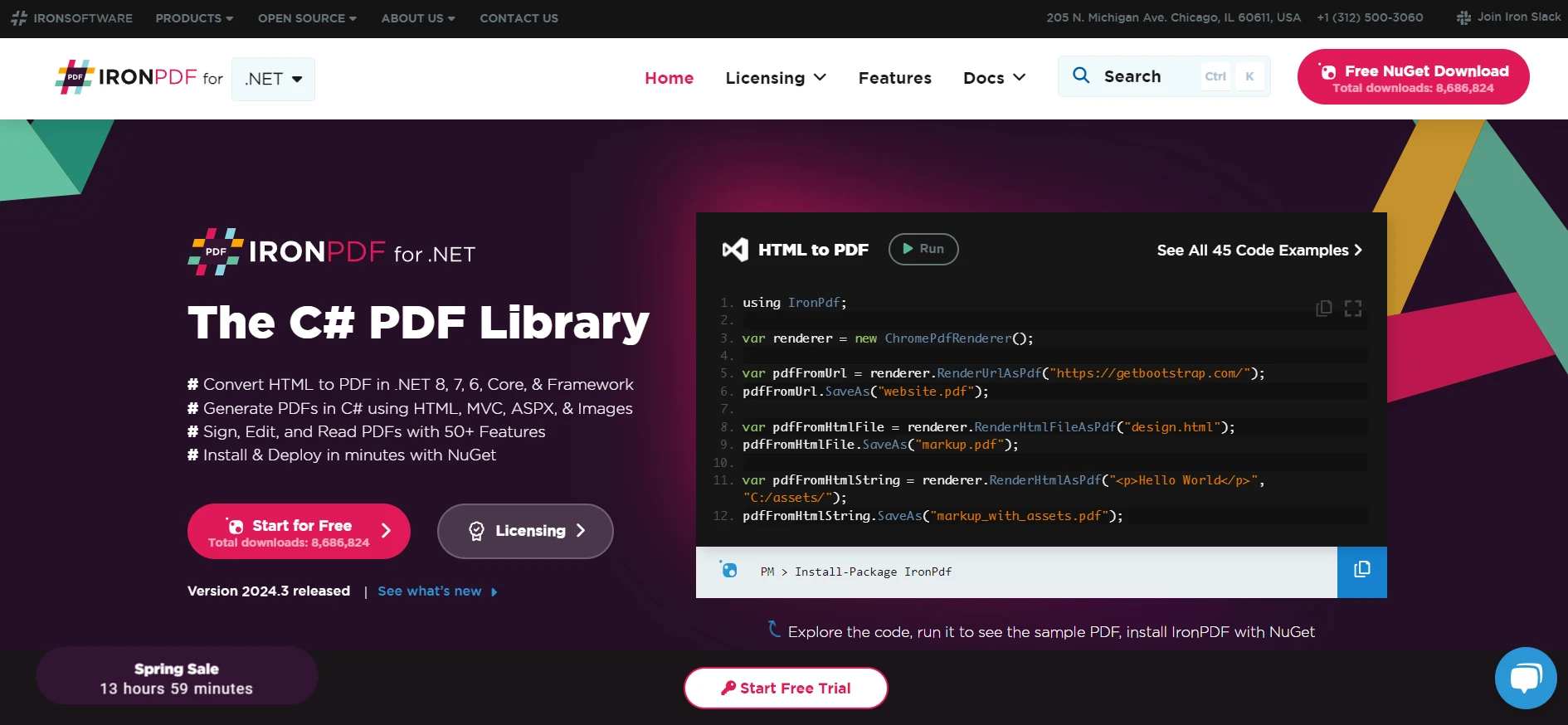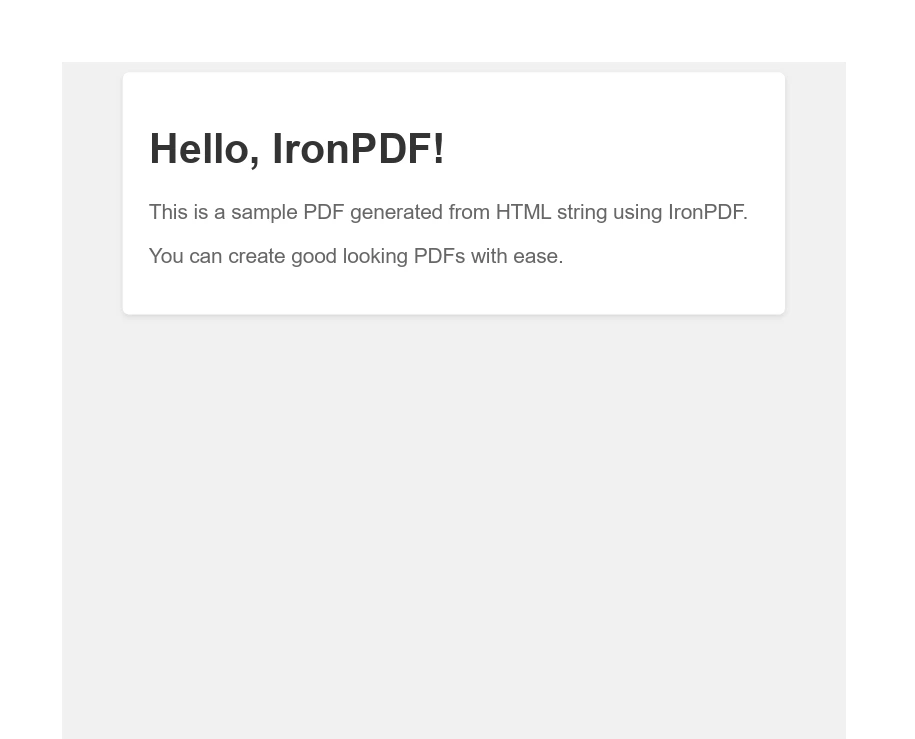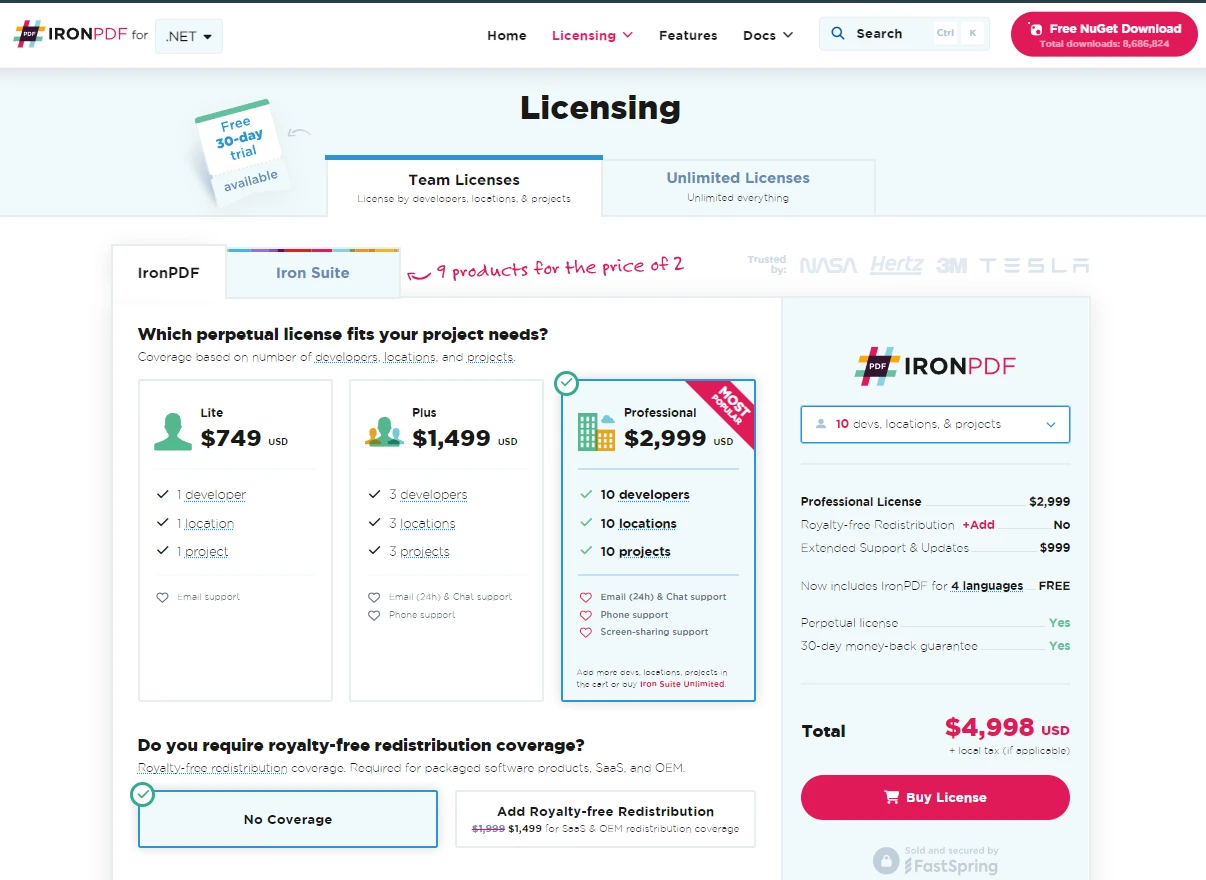Test in a live environment
Test in production without watermarks.
Works wherever you need it to.
Creating a bridge between Java and .NET environments can seem daunting due to the fundamental differences between the two platforms. However, with tools and techniques designed to facilitate this process, developers can integrate Java and .NET systems effectively.
This tutorial will focus on leveraging the ContactJavaObjects.Net framework to enable communication between Java and .NET objects, providing practical use cases, coding examples, and a clear explanation of the processes involved. We'll also learn about the IronPDF library in the article.
At its core, the ContactJavaObjects.Net framework serves as a mediator, allowing .NET applications to create, manipulate, and access Java objects as if they were native .NET objects. This is achieved through the use of proxies which act as intermediaries between the .NET world and the Java platform.
Java classes are exposed to .NET as proxies, and these proxies are then used by .NET code to interact with the Java Virtual Machine (JVM). This interaction is essential for scenarios where an application is built upon both Java and .NET technologies and needs them to work seamlessly together.
Before diving into code examples, it's important to set up your development environment correctly. This involves ensuring that both the Java Development Kit (JDK) and the .NET Framework SDK are installed on your machine. Additionally, you'll need to download and reference the ContactJavaObjects.Net library in your .NET project. Typically, this library is distributed as DLL files which can be added to your project's references via the Solution Explorer in Visual Studio.
The process of integrating Java classes into a .NET application involves several key steps:
Begin by writing your Java program and compiling it into a class file. For more complex applications, these class files are often packaged into a JAR file. Here's a simple Java class example:
public class Contact {
private String name;
private String email;
public Contact(String name, String email) {
this.name = name;
this.email = email;
}
public void displayInfo() {
System.out.println("Name: " + name + ", Email: " + email);
}
}public class Contact {
private String name;
private String email;
public Contact(String name, String email) {
this.name = name;
this.email = email;
}
public void displayInfo() {
System.out.println("Name: " + name + ", Email: " + email);
}
}Public Class Contact
Private name As String
Private email As String
Public Sub New(ByVal name As String, ByVal email As String)
Me.name = name
Me.email = email
End Sub
Public Sub displayInfo()
System.out.println("Name: " & name & ", Email: " & email)
End Sub
End ClassUse the ContactJavaObjects.Net tool to generate .NET proxies for your Java classes. This process will create a .NET class that mirrors the methods and properties of your Java class.
With the proxies generated, you can now write .NET code that interacts with your Java objects. The .NET proxies provide a way to instantiate Java objects, call methods, and access properties.
The following is an example of .NET code that uses the generated proxies to interact with the Java Contact class:
using ContactJavaObjects.Net;
using System;
class Program {
public static void Main(string [] args) {
// Initialize the Java Virtual Machine
var setup = new BridgeSetup();
JavaVM.Initialize(setup);
// Create a new instance of the Java Contact class
var contact = new Contact("John Doe", "john.doe@example.com");
// Call the displayInfo method on the Java object
contact.DisplayInfo();
Console.ReadKey();
}
}using ContactJavaObjects.Net;
using System;
class Program {
public static void Main(string [] args) {
// Initialize the Java Virtual Machine
var setup = new BridgeSetup();
JavaVM.Initialize(setup);
// Create a new instance of the Java Contact class
var contact = new Contact("John Doe", "john.doe@example.com");
// Call the displayInfo method on the Java object
contact.DisplayInfo();
Console.ReadKey();
}
}Imports ContactJavaObjects.Net
Imports System
Friend Class Program
Public Shared Sub Main(ByVal args() As String)
' Initialize the Java Virtual Machine
Dim setup = New BridgeSetup()
JavaVM.Initialize(setup)
' Create a new instance of the Java Contact class
Dim contact As New Contact("John Doe", "john.doe@example.com")
' Call the displayInfo method on the Java object
contact.DisplayInfo()
Console.ReadKey()
End Sub
End ClassIn this example, the BridgeSetup class from the ContactJavaObjects.Net library is used to initialize the Java Virtual Machine within the .NET application. This is a crucial step as it loads the necessary Java classes and resources. Following initialization, the .NET code can seamlessly create and manipulate Java objects.
Integrating Java objects into .NET applications has a wide range of practical applications. For instance, you might have a library of useful Java classes that you wish to use within a .NET application without having to rewrite them in C# or another .NET-supported language.
Additionally, this approach can be beneficial in enterprise environments where applications are often built on a mixture of Java and .NET technologies. It enables the development of hybrid applications that leverage the strengths of both platforms.

IronPDF is a PDF library designed for developers who need to create, read, and edit PDF files in their .NET applications. With support for both C# and Java, it allows for easy integration into projects regardless of the programming language used. IronPDF simplifies the process of working with PDF documents, offering features that handle everything from generating PDFs from HTML to extracting text from existing PDFs.
Its versatility makes it suitable for a wide range of applications, from generating reports to creating dynamic invoices. Whether you're developing for the web or desktop, IronPDF provides a straightforward solution for incorporating PDF functionalities into your projects.
Here is the sample code example of IronPDF to create PDF from the HTML String in C#:
using IronPdf;
class Program
{
static void Main(string [] args)
{
License.LicenseKey = "License-Key";
// HTML string to be converted to PDF
string htmlString = @"
<!DOCTYPE html>
<html lang='en'>
<head>
<meta charset='UTF-8'>
<meta name='viewport' content='width=device-width, initial-scale=1.0'>
<title>Sample PDF</title>
<style>
body {
font-family: Arial, sans-serif;
background-color: #f2f2f2;
}
.container {
width: 80%;
margin: auto;
background-color: #fff;
padding: 20px;
border-radius: 5px;
box-shadow: 0 2px 5px rgba(0,0,0,0.1);
}
h1 {
color: #333;
}
p {
color: #666;
}
</style>
</head>
<body>
<div class='container'>
<h1>Hello, IronPDF!</h1>
<p>This is a sample PDF generated from HTML string using IronPDF.</p>
<p>You can create good looking PDFs with ease.</p>
</div>
</body>
</html>
";
// Convert HTML string to PDF
var Renderer = new ChromePdfRenderer();
var PDF = Renderer.RenderHtmlAsPdf(htmlString);
// Save PDF to file
PDF.SaveAs("SamplePDF.pdf");
}
}using IronPdf;
class Program
{
static void Main(string [] args)
{
License.LicenseKey = "License-Key";
// HTML string to be converted to PDF
string htmlString = @"
<!DOCTYPE html>
<html lang='en'>
<head>
<meta charset='UTF-8'>
<meta name='viewport' content='width=device-width, initial-scale=1.0'>
<title>Sample PDF</title>
<style>
body {
font-family: Arial, sans-serif;
background-color: #f2f2f2;
}
.container {
width: 80%;
margin: auto;
background-color: #fff;
padding: 20px;
border-radius: 5px;
box-shadow: 0 2px 5px rgba(0,0,0,0.1);
}
h1 {
color: #333;
}
p {
color: #666;
}
</style>
</head>
<body>
<div class='container'>
<h1>Hello, IronPDF!</h1>
<p>This is a sample PDF generated from HTML string using IronPDF.</p>
<p>You can create good looking PDFs with ease.</p>
</div>
</body>
</html>
";
// Convert HTML string to PDF
var Renderer = new ChromePdfRenderer();
var PDF = Renderer.RenderHtmlAsPdf(htmlString);
// Save PDF to file
PDF.SaveAs("SamplePDF.pdf");
}
}Imports IronPdf
Friend Class Program
Shared Sub Main(ByVal args() As String)
License.LicenseKey = "License-Key"
' HTML string to be converted to PDF
Dim htmlString As String = "
<!DOCTYPE html>
<html lang='en'>
<head>
<meta charset='UTF-8'>
<meta name='viewport' content='width=device-width, initial-scale=1.0'>
<title>Sample PDF</title>
<style>
body {
font-family: Arial, sans-serif;
background-color: #f2f2f2;
}
.container {
width: 80%;
margin: auto;
background-color: #fff;
padding: 20px;
border-radius: 5px;
box-shadow: 0 2px 5px rgba(0,0,0,0.1);
}
h1 {
color: #333;
}
p {
color: #666;
}
</style>
</head>
<body>
<div class='container'>
<h1>Hello, IronPDF!</h1>
<p>This is a sample PDF generated from HTML string using IronPDF.</p>
<p>You can create good looking PDFs with ease.</p>
</div>
</body>
</html>
"
' Convert HTML string to PDF
Dim Renderer = New ChromePdfRenderer()
Dim PDF = Renderer.RenderHtmlAsPdf(htmlString)
' Save PDF to file
PDF.SaveAs("SamplePDF.pdf")
End Sub
End ClassThis code creates a simple HTML string and converts it into a PDF using IronPDF. The HTML includes some basic styling to make the resulting PDF look presentable. The generated PDF is then saved to a file named "SamplePDF.pdf".


Integrating Java objects into .NET applications using the ContactJavaObjects.Net framework allows developers to bridge the gap between the .NET platform and the Java platform. By following the steps outlined in this tutorial, you can enhance your .NET applications with the functionality of existing Java code, thereby extending their capabilities and reusing code effectively. It's important to remember that while this tutorial provides a foundation, the real-world applications of these techniques can be far-reaching, depending on the specific needs of your project or organization.
IronPDF for developers looking to explore its features, with licenses starting from $749. This provides a cost-effective way for teams to integrate advanced PDF functionalities into their .NET and Java applications, further illustrating the power and flexibility of combining these two platforms.
9 .NET API products for your office documents








